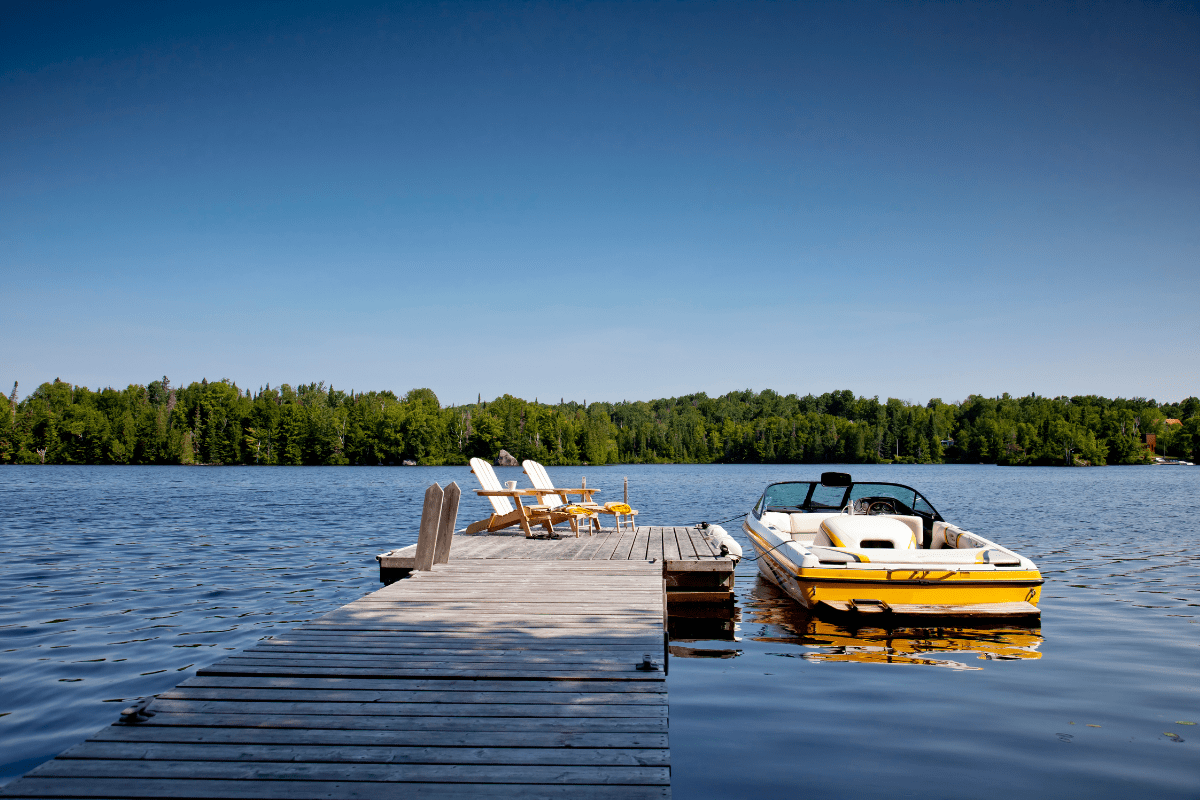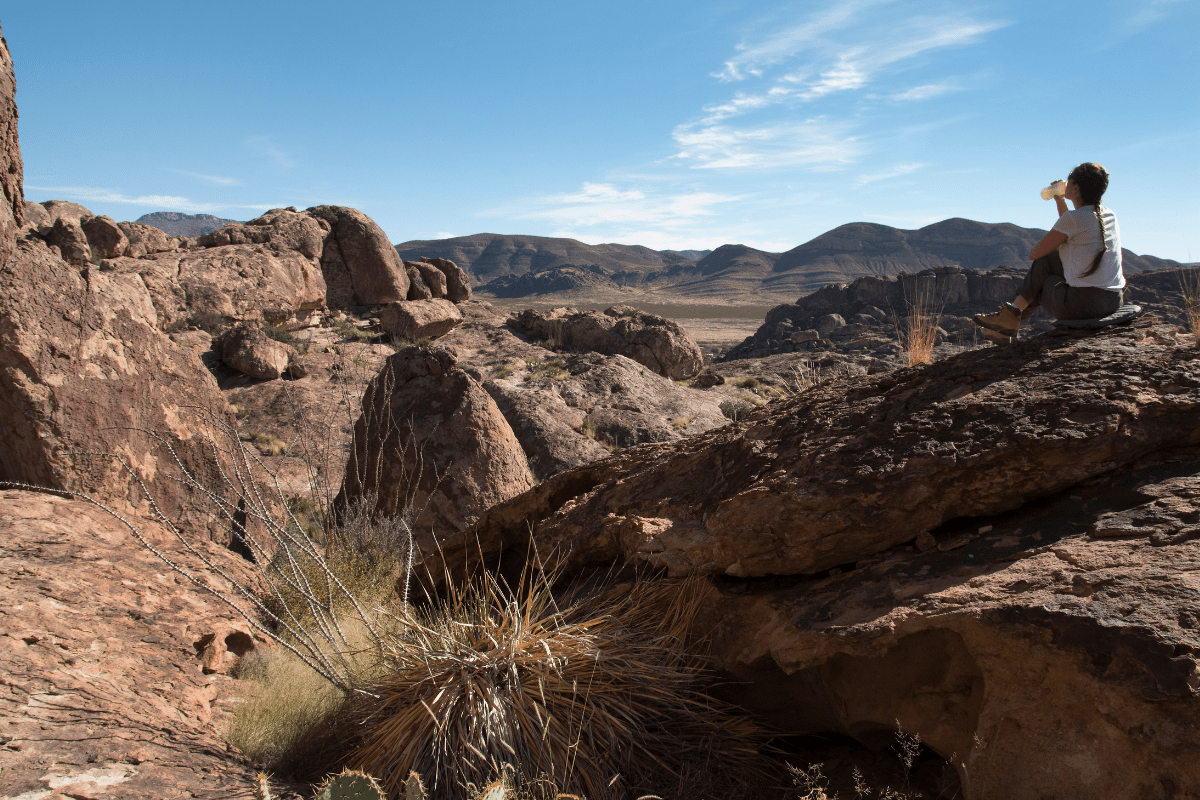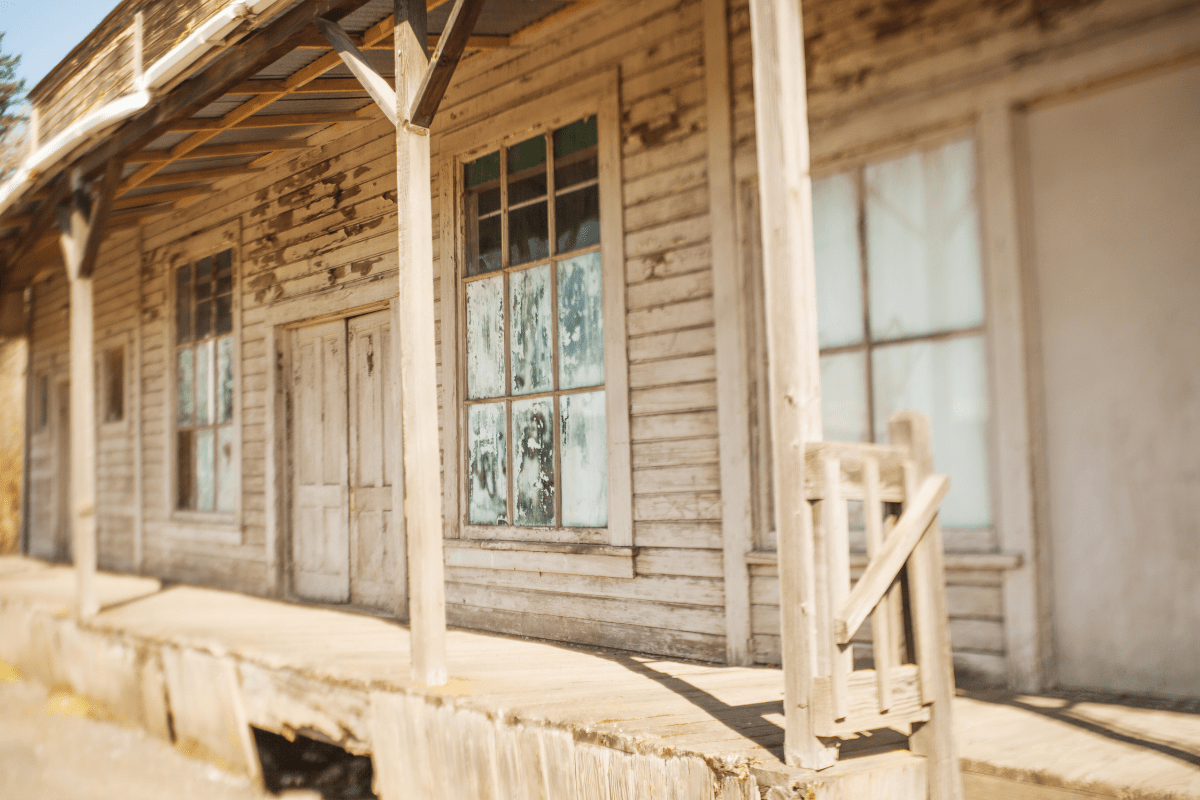Texas might only have one natural lake, but don't let that fool you. With nearly 7,000 reservoirs sprawling across 5,607 square miles of water, the Lone Star State has basically turned "fake it till you make it" into an aquatic empire that generates $97.5 billion in tourism annually.
Why Texas lakes deserve your weekend
Let's get one thing straight: Texas lakes aren't just puddles with boat ramps. These engineering marvels attract over 9.3 million state park visitors each year and support 1.3 million tourism jobs statewide. Most were built between the 1930s and 1970s after Mother Nature threw some spectacular tantrums in the form of floods and droughts, and now they're the backbone of Texas outdoor recreation.
The state's 188 major reservoirs range from intimate 25-acre hideaways to the massive Toledo Bend Reservoir, which sprawls across 185,000 acres along the Louisiana border. Whether you're chasing trophy bass, teaching your kids to swim, or just need to float on something inflatable while holding a cold beverage, Texas has a lake for that.
What makes these lakes special isn't just their size or number… it's the sheer variety of experiences they offer. You can scuba dive in crystal-clear waters one weekend and catch a record-breaking catfish the next. Some lakes are party central with wakeboarding and music festivals, while others are so remote you'll have more conversations with birds than people.
The heavy hitters: Lakes everyone talks about
These are the lakes that dominate Instagram feeds and fishing forums alike. Each offers something unique, though they all share one common trait: they're absolutely worth the hype.
Lake Travis keeps Austin weird (and wet)
Lake Travis sprawls across 18,622 acres northwest of Austin, plunging to depths of 190 feet and offering 270 miles of shoreline dotted with 15 parks. This Highland Lakes chain centerpiece currently sits at about 89.9% capacity after some dramatic July flooding that raised water levels over 30 feet in just two weeks… because Texas doesn't do anything halfway, including rain.
Devil's Cove attracts the wakeboarding crowd, while Pace Bend Park draws cliff jumpers who apparently think gravity is just a suggestion. The water stays clear enough for scuba diving, and several underwater preserves give divers something interesting to explore besides lost sunglasses and boat anchors. State park entry runs $4 per person over 13, with camping ranging from $15 to $35 nightly, depending on whether you're roughing it or bringing your mansion on wheels.
The lake hosts numerous music festivals and boating events throughout the year, though you'll need to follow zebra mussel prevention rules, which basically means cleaning your boat like your mother-in-law is coming to visit. These invasive little jerks have infested 34 Texas lakes and counting, so the "Clean, Drain, Dry" routine isn't optional.
Lake Fork: Where bass dreams come true
Lake Fork has achieved legendary status among anglers, holding 36 of Texas's top 50 largemouth bass catches. This 27,264-acre reservoir near Quitman keeps 80% of its original standing timber, creating an underwater forest across 315 miles of shoreline that bass absolutely love.
The lake produced the state record 18.18-pound largemouth in 1992, and it's still cranking out giants thanks to special slot limits that protect breeding stock. Here's how it works:
- Release all bass between 16-24 inches
- Keep up to 5 under 16 inches
- Or keep 1 trophy over 24 inches
- Cry a little when releasing that 23-inch beauty
- Book another guide trip immediately
Professional guides charge $400 to $800 for full-day trips, which sounds expensive until you're holding a 10-pound bass and suddenly understanding why people mortgage their houses for bass boats. The lake's trophy genetics trace back to 732,514 Florida-strain largemouth stocked between 1979 and 1987, proving that good breeding matters whether you're raising horses or hawgs.
Lake Texoma: The striper capital that shares
Straddling the Texas-Oklahoma border, Lake Texoma covers 74,686 acres with 580 miles of shoreline, ranking as the 12th largest reservoir in the United States. It's one of the few lakes with a self-sustaining striped bass population, earning its "Striper Capital of the World" nickname through actual fish, not just optimistic marketing.
The lake produced the former world-record blue catfish at 121.5 pounds in 2004, though that record has since been broken by someone with an even bigger boat and better luck. Eisenhower State Park offers 51 campsites for those who prefer their nature with a side of amenities. You'll need a special $12 Texoma license that works in both states' waters, because fish don't respect political boundaries even if we have to.
Summer weekends transform the lake into Dallas-Fort Worth's aquatic playground, with enough boats to make you think there's a naval invasion happening. Multiple tournaments run throughout the year, and waterfront entertainment at the marinas ranges from live music to people-watching that rivals any reality TV show.
Hidden gems worth the drive
Not every great lake needs a marketing department. These lesser-known spots offer incredible experiences without the crowds, perfect for when you want to actually hear the birds instead of boat engines.
Lake O' the Pines lives up to its name
Tucked away 150 miles east of Dallas near the Louisiana border, Lake O' the Pines sprawls across 18,700 acres of East Texas beauty. Over 240 bird species call this place home, including bald eagles who probably judge your fishing technique from their lofty perches.
The lake's 74.5-pound blue catfish record proves that monsters lurk in these waters, though most visitors are happy catching dinner-sized fish. Six parks provide camping and boat access, with Brushy Creek and Hurricane Creek parks offering the best camping experiences according to locals who know which sites don't flood when someone sneezes upstream.
Lake Mineral Wells State Park rocks (literally)
This 640-acre spring-fed lake sits in the unique Western Cross Timbers ecosystem just 45 minutes west of Fort Worth. The park features North Texas's only natural rock climbing venue at Penitentiary Hollow, plus 12.8 miles of hiking trails for those who prefer their adventures horizontal.
Here's what makes this park special:
- No fishing license required in state parks
- 100 campsites for overnight stays
- 20-mile trailway for biking
- Swimming areas that aren't crowded
- Rock climbing that's actually on rocks
- $7 daily entry fee
The spring-fed water stays refreshingly cool even in August, though "refreshing" is what optimists call it when they're trying not to say "cold."
Lake Cypress Springs: The clear water unicorn
Lake Cypress Springs earned its reputation as Texas's "Most Beautiful Lake" from D Magazine, and honestly, they weren't exaggerating. This 3,461-acre East Texas jewel maintains crystal-clear spring-fed water so transparent you can see your feet… and the fish laughing at your bait.
The lake maintains its clarity through grass carp that eliminated invasive hydrilla, because sometimes the solution to nature's problems is more nature. A 26-foot boat length limit keeps the water calm and the atmosphere peaceful. The lake has produced some impressive catches too, including a 44.25-pound blue catfish and 45.5-pound flathead that probably had their own zip codes.
Planning your lake adventure (without losing your mind)
Texas lake regulations might seem complicated, but they're actually pretty straightforward once you know the basics. Think of it like learning to dance… awkward at first, but eventually you'll find your rhythm.
Licenses and fees that actually make sense
A basic freshwater fishing license costs $30 annually, or you can spring for the $68 Super Combo that includes hunting privileges for when the fish aren't biting and you need to blame something else. Youth under 17 fish free because Texas believes in corrupting them young with outdoor hobbies.
The Texas State Parks Pass runs $70 annually and pays for itself if you visit more than three times, plus it comes with perks:
- Free entry to 88 state parks
- 50% off your second night camping
- 10% discount at park stores
- Smugness when passing the entry line
- Actually saving money for once
Individual park entry costs $4 per person over 13, and camping ranges from $15 to $35 nightly depending on whether you want electricity or enjoy pretending it's 1850. Reservations open five months in advance through the state park website, and popular weekends book faster than Taylor Swift tickets.
Boat rules that keep everyone floating
Texas requires boater education certification for anyone born after September 1, 1993, operating vessels over 15 horsepower. The $11 lifetime certificate never expires, unlike your boat's warranty or your patience with dock traffic.
Registration fees depend on boat length:
- Under 16 feet: $32
- 16-26 feet: $53
- 26-40 feet: $110
- Over 40 feet: $150
- Valid for two years of splashing
All children under 13 must wear life jackets on vessels under 26 feet, and everyone needs them on jet skis because physics doesn't care how good a swimmer you think you are.
The fish that make Texas famous
Texas lakes dominate national bass fishing rankings, with O.H. Ivie at #2, Lake Fork at #7, and Sam Rayburn at #9 in B.A.S.S.'s listings. The state harbors 268 fish species across 49 families, from the state fish Guadalupe bass to alligator gar that can reach 279 pounds and look like swimming dinosaurs.
Tournament culture and big money
The 2025 Bassmaster Classic comes to Lake Ray Roberts near Fort Worth from March 21-23, featuring a $1 million purse and expected attendance of 150,000 people who really, really like fish. The economic impact reaches $25 million, proving that bass fishing isn't just a hobby… it's an economy.
Texas Parks and Wildlife stocks 40 million fish annually across public waters. The Toyota ShareLunker program recorded 689 entries in 2024, including 18 Legacy Class bass exceeding 13 pounds. These giants get pampered like celebrities before being released to make more giants, because that's how you build a dynasty.
Best times to wet a line
Spring spawning season from March through May offers peak bass action, when fish are aggressive and anglers are optimistic. February through May brings white bass runs with spectacular topwater action that makes everyone feel like a pro. Winter months feature rainbow trout stocking in 18 select lakes from November through March, giving cold-weather anglers something to chase besides their runaway bobbers.
Conservation challenges (and why you should care)
Texas lakes face real challenges that affect everyone who uses them. The good news? Most problems have solutions if people actually follow the rules.
The zebra mussel invasion
These invasive mollusks now infest 34 Texas lakes, with Lake Nasworthy joining the list in April 2025. They clog water pipes, damage boats, cut feet, and generally act like aquatic jerks. The mandatory "Clean, Drain, Dry" law requires removing all water from boats when leaving any water body, with fines up to $500 for violations.
Lake Waco offers hope though… they successfully eradicated their population in 2021 using plastic sheeting to smother colonies. It's like putting a tarp over weeds, except underwater and way more expensive.
Water levels and drought drama
Texas weather can't make up its mind. Lake Buchanan sits at 99.2% capacity as of August 2025 after recovering from 73% following summer floods. Meanwhile, Medina Lake hit 2.6% capacity in May 2024, basically becoming a very large puddle with a dam complex.
These extremes expose ghost towns normally hidden underwater, including Old Bluffton under Lake Buchanan and four complete communities beneath Lake Texoma. It's like archaeology, except you don't need a degree and the artifacts are someone's old fence posts.
What's new and what's next
Texas isn't done building lakes. Bois d'Arc Lake opened in April 2024 as the first major reservoir in over 30 years, spanning 16,641 acres in Fannin County. The lake received 373,859 pure Florida largemouth bass descended from ShareLunker giants, managed with 16-inch maximum length limits to promote trophy growth.
November 2023's Proposition 14 created a $1 billion fund for new state parks, addressing geographic gaps and serving underserved populations. This investment follows record tourism performance, with 129 million visitors generating that $97.5 billion mentioned earlier.
Technology keeps changing the game too. Mobile apps handle licenses and reservations, while forward-facing sonar like LiveScope has revolutionized fishing to the point where fish probably need their own sonar to avoid anglers. Lake Ralph Hall continues construction near Ladonia as the region adds 100,000 new residents annually who all want somewhere to fish.
Your Texas lake adventure awaits
Texas lakes offer something genuinely special… a massive playground of water in a state not exactly famous for its maritime heritage. From Lake Fork's trophy bass to Caddo Lake's ancient cypress trees, from party boats on Travis to solitude on Lake O' the Pines, these waters provide escape, adventure, and stories worth telling.
Smart planning makes everything better. Get your licenses online at the TPWD website, book campsites months ahead, and follow the zebra mussel rules even when nobody's watching. Understanding seasonal patterns helps too… chase spawning bass in spring, beat the heat with swimming in summer, or enjoy peaceful fall fishing when the crowds thin out.
These lakes aren't just recreational resources; they're economic engines, historical repositories, and ecological treasures that deserve protection. Whether you're a serious angler, weekend swimmer, or someone who just likes pretty water views, Texas lakes deliver. Plus, where else can you catch a fish that weighs more than your dog while standing in a state that's 90% desert? That's Texas logic for you, and honestly, it works.





